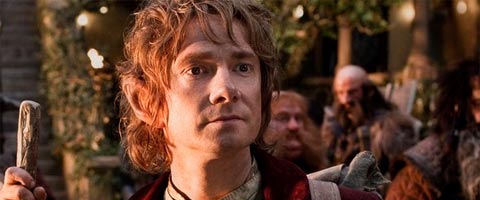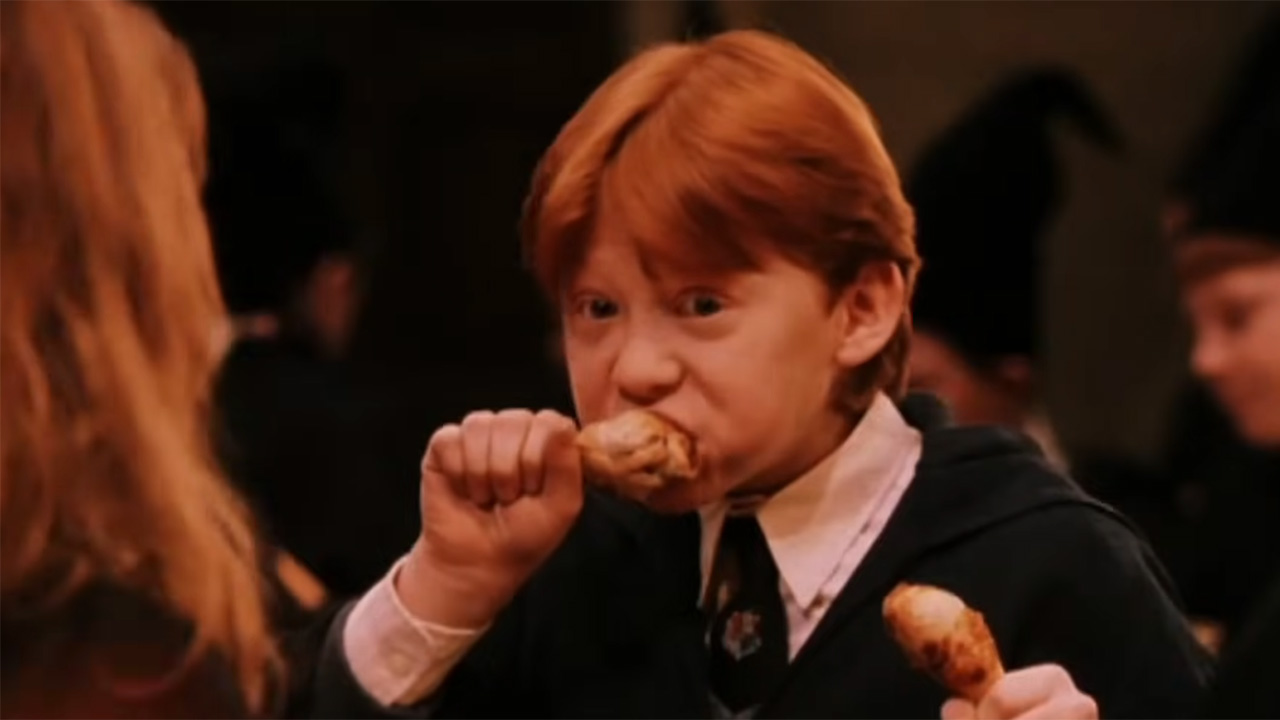New Hobbit Footage Shows Bilbo And Gollum Trading Riddles

If you haven’t already figured it out, 2012 is turning out to be one hell of a year in Hollywood. In addition to the fact that the quality of film’s has been dramatic and surprising in the last few months, this year is packed with an astounding number of event films, including The Hunger Games, The Avengers, Prometheus, The Dark Knight Rises, The Amazing Spider-Man and Skyfall. But with so many huge titles set to come out this summer and fall, we can’t forget the gigantic film that will be released at the very end of the year: Peter Jackson’s The Hobbit: An Unexpected Journey.
As mentioned in my previous post about The Dark Knight Rises, I spent this morning at the Warner Bros. presentation at CinemaCon, which ended with 10 full minutes of footage from the highly-anticipated J.R.R. Tolkien adaptation. But this was more than just your standard sizzle reel, as the material was the first ever to be shown at the somewhat-controversial 48 frames-per-second frame rate that Jackson announced he was using almost exactly one year ago.
The Hobbit footage was introduced with a video from Peter Jackson in which he talked about his choice to use the higher frame rate. Said Jackson,
”As a filmmaker, I always want to create a strong sense of reality, to allow the audience to lose themselves in whatever the cinematic story is that I’m presenting. Shooting and projecting at 48 fps gives you the illusion that a hole has been cut in the wall of the cinema, and you’re watching the story unfold with a heightened sense of reality. It’s terrific for 3D; I’ve looked at the 48 fps dailies for The Hobbit: An Unexpected Journey in 3D for over a year now, and with the reduction in strobing and flicker, it is a much more gentle experience on your eyes. 48 fps is not just limited to 3D. A film shot in 48 fps looks fantastic when projected in 2D, and converts well to 24 fps as well.”
As for the footage itself, the audience got to watch multiple short scenes. The first showed a battle between Bilbo Baggins (Martin Freeman) and a pack of trolls - a situation the hero is rescued from by Thorin Oakenshield and the other dwarfs. Next came a scene in which Gandalf (Ian McKellan) is searching through what appeared to be catacombs, before being attacked. Then came a meeting between Gandalf, Saruman (Christopher Lee), Elrond (Hugo Weaving) and Galadriel (Cate Blanchett) in which they discuss Glamdring, a sword that was supposedly locked in a tomb that was thought to be forever sealed. That was followed by a scene in which Gandalf is in a tomb and is approached by a strange little man who keeps birds under his hat (I wasn’t entirely sure who it was). Then came one of the most famous parts of the book, as Bilbo and Gollum (Andy Serkis) exchanged riddles. The footage ended with a series of shots, but my favorite of which featured Legolas (Orlando Bloom) sliding in to a scene with his bow-and-arrow drawn, threatening to fire at the dwarves.
The most notable element of the footage, however, was the extreme difference between the look of The Hobbit and the previous Lord of the Rings films – and I say that with fairly mixed feelings. In his intro, Jackson said that he was showing the CinemaCon crowd a full ten minutes simply because it would take a minute for eyes to adjust to the change, and he wasn’t wrong. The preview began with the same scenes that opened last December’s trailer, and I will admit it was strange seeing the footage with such markedly different presentation. After a while there was some adjustment in the way that my brain was processing what it was seeing, but at the same time the effect never really wore off.
What impressed me about the frame rate change was the sharpness and quality of the image that Jackson spoke of. The video was peppered with some of director’s trademark sweeping, epic shots and just the clarity of the scenes was mindblowing as you could pick up on every little rock formation on the side of the mountains and each little wave in the water. The 3D was also beyond impressive and, most importantly, surprisingly bright. Even scenes that took place in the dark – such as Bilbo and Gollum in the cave – weren’t adversely affected by the fact that I was basically wearing sunglasses indoors.
The big question that remains about The Hobbit is whether or not exhibitors will actually be able to show the movie at 48 fps. There are many theaters that simply aren’t equipped to project movies at faster frame rates, meaning that come December people may not be able to watch the film in the director’s intended format. While I’m still not sure how the entire movie will play, I will say that I am incredibly curious to find out.
Your Daily Blend of Entertainment News

Eric Eisenberg is the Assistant Managing Editor at CinemaBlend. After graduating Boston University and earning a bachelor’s degree in journalism, he took a part-time job as a staff writer for CinemaBlend, and after six months was offered the opportunity to move to Los Angeles and take on a newly created West Coast Editor position. Over a decade later, he's continuing to advance his interests and expertise. In addition to conducting filmmaker interviews and contributing to the news and feature content of the site, Eric also oversees the Movie Reviews section, writes the the weekend box office report (published Sundays), and is the site's resident Stephen King expert. He has two King-related columns.
